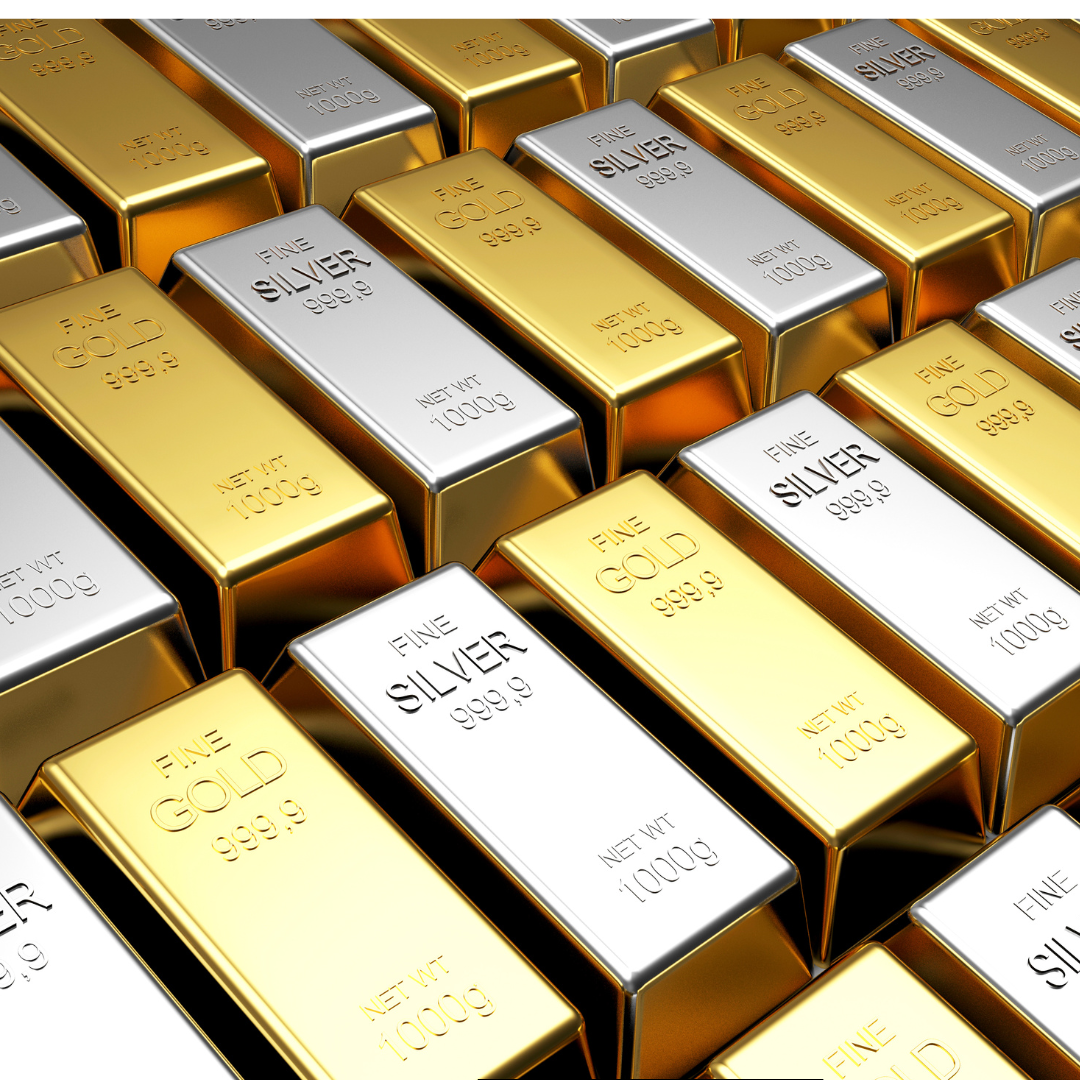Gold, Silver: Key Trends Shaping Investment Opportunities in 2024
Gold and silver have long captivated investors and collectors alike, serving not only as precious commodities but also as symbols of wealth and power. Investing in gold and silver can offer a hedge against inflation and economic uncertainty, making them attractive options for diversifying a portfolio. These metals possess intrinsic value and receive widespread recognition, enhancing their appeal across different markets.
Gold and silver’s historical significance further adds to their allure. These metals have been utilized as currency and means of trade for centuries, establishing a legacy that persists today. Their roles in jewelry, technology, and industry also contribute to their sustained demand.
As market dynamics shift, understanding the benefits and risks of precious metal investments becomes crucial. Awareness of price trends, market conditions, and economic indicators can empower investors to make informed decisions in this ever-evolving landscape.
Historical Significance
Gold and silver have shaped human history through their economic, cultural, and symbolic values. Their roles in ancient civilizations and monetary systems laid the foundations for wealth and trade.
Gold in Ancient Civilizations
Gold has been revered since antiquity. In ancient Egypt, it symbolized divine power and was used to craft jewelry and burial artifacts for pharaohs. Its durability and lustre made it a preferred choice for items intended for the afterlife.
The Incas considered gold the “sweat of the sun.” They used it extensively in art and rituals. Similarly, Mesopotamian societies utilized gold for decorative and ceremonial purposes, creating intricate items like Tutankhamun’s iconic mask.
Gold’s rarity and universally accepted value established it as a medium of exchange. Many cultures employed gold in trade and as a symbol of wealth, influencing economic practices for centuries.
Silver’s Role in Monetary Systems
Silver has held significant value as a medium of exchange. Its use dates back thousands of years to ancient Mesopotamia, where silver pieces were weighed and exchanged for goods. This practice led to the development of early currency systems.
The Athenian drachma, minted from silver, became central to commerce in ancient Greece. Its popularity spread across Mediterranean trade routes, enhancing economic interactions among different cultures. Silver coins were later adopted by Roman and other empires, solidifying their role in monetary systems.
In addition to trade, silver served an important purpose in craftsmanship and art. Its malleability enabled the creation of intricate designs, further establishing its importance in both economic and cultural realms.
Physical and Chemical Properties
Gold and silver possess unique physical and chemical properties that define their usage in various applications. Their distinctive characteristics contribute to their value in industries ranging from jewelry to electronics.
Gold Attributes
Gold is a dense metal with a specific gravity of approximately 19.32 g/cm³. Its bright yellow colour remains unchanged even when exposed to air or moisture. Gold’s melting point is around 1,064 °C (1,947 °F), and it exhibits excellent malleability and ductility, allowing it to be shaped into thin sheets or drawn into wire.
Gold is relatively unreactive chemically. It does not tarnish or corrode, making it ideal for jewelry and electronic connections. Gold can withstand high temperatures and is resistant to most acids, with the exception of aqua regia, a mixture of hydrochloric and nitric acids. Its non-reactive nature and ability to conduct electricity enhance its value in various sectors.
Silver Attributes
Silver has a lower density than gold, with a specific gravity of about 10.49 g/cm³. It is known for its bright, shiny appearance, which can tarnish over time due to a reaction with sulphur compounds in the air. Silver melts at approximately 961.8 °C (1,763 °F) and is both malleable and ductile.
In terms of chemical properties, silver is more reactive than gold. It can readily engage with sulphur, chlorine, and bromine, leading to the formation of various compounds. Silver also has the highest electrical and thermal conductivity of all metals, which makes it invaluable in electrical applications. Its antibacterial properties further enhance its utility in medical applications.
Mining and Production
Mining and production play critical roles in the supply chain of gold and silver. Various techniques are employed to extract these precious metals, each with specific processes and environmental considerations.
Gold Mining Techniques
Gold mining is primarily conducted through several methods, including open-pit mining, underground mining, and placer mining.
- Open-pit mining involves removing large quantities of earth to expose gold-rich ore. This method is cost-effective but can have significant environmental impacts.
- Underground mining taps into deeper veins of gold, utilizing shafts and tunnels. It requires more sophisticated technology and is usually more expensive.
- Placer mining focuses on extracting gold from riverbeds and sediments. It often employs manual techniques or simple machinery to separate gold from other materials.
Each method is selected based on factors such as ore location, environmental regulations, and economic feasibility.
Silver Extraction Methods
Silver extraction methods are also varied, with techniques such as frosting, ion exchange, and electrolytic refining.
- Frosting involves heating silver ore containing lead, resulting in a molten mixture that separates liquid lead and solid silver.
- Ion-exchange utilizes resins to capture silver ions from solutions, which are then converted into solid silver.
- Electrolytic refining purifies silver by passing an electric current through a solution containing silver salts, depositing pure silver onto cathodes.
These methods are chosen based on the silver ore’s characteristics, economic conditions, and desired purity levels.
Economic Impact
The economic impact of gold and silver involves understanding their roles in the market and how investors approach these precious metals. This section explores market dynamics for gold and investment strategies for silver.
Market Dynamics for Gold
Gold serves as a safe-haven asset during economic uncertainty. Its value often rises when inflation increases or when geopolitical tensions escalate.
Factors influencing the gold market include:
- Central Bank Policies: Central banks often hold gold as part of their reserves, affecting demand.
- Currency Fluctuations: A weaker dollar typically increases gold prices since it becomes cheaper for foreign investors.
- Market Sentiment: Investor sentiment can lead to fluctuations based on market trends or predictions.
The demand for gold jewelry, technology, and investment also crucially shapes its market dynamics.
Investment Strategies for Silver
Silver is often viewed as a hybrid investment, serving both as an industrial metal and a precious asset. Investors looking to diversify use several strategies when investing in silver.
Some common strategies include:
- Physical Silver: Buying coins or bullion for direct ownership and long-term holding.
- Silver ETFs: Exchange-traded funds allow investors to gain exposure without holding physical silver.
- Mining Stocks: Investing in silver mining companies can provide leveraged exposure to silver price movements.
Market trends, such as the growing industrial demand for silver in electronics and renewable energy, significantly influence investment approaches.
Industrial Applications
Gold and silver are crucial in various industrial applications. Their unique properties make them valuable in electronics and renewable energy technologies.
Use of Gold in Electronics
Gold is widely used in electronics due to its excellent conductivity and resistance to corrosion. It can be found in connectors, switches, and circuit boards. Gold-plated connectors ensure reliable connections in devices, minimizing the risk of data loss.
The manufacturing process involves electroplating, where a thin layer of gold is deposited on conductive metals. This enhances both durability and performance. Additionally, gold’s low reactivity makes it ideal for use in high-frequency devices, such as smartphones and computers.
In summary, gold contributes to improved efficiency and longevity in various electronic components.
Silver in Photovoltaic Cells
Silver plays a vital role in the production of photovoltaic cells, which are essential for solar energy conversion. It is primarily used for the conductive tracks on solar panels, facilitating the efficient flow of electricity generated from sunlight.
Silver’s high electrical conductivity allows for minimal energy loss. Manufacturers typically apply a fine layer of silver paste to the cell’s surface in a screen-printing process.
While silver is more expensive than other materials, its efficiency justifies the cost. The demand for solar energy is rising, thus driving innovations in silver usage to enhance solar panel performance and reduce manufacturing costs.
Cultural Influence
Gold and silver have played significant roles in various cultures throughout history. Their symbolism and use in decorative arts reflect values, beliefs, and societal norms.
Gold Symbolism and Jewelry
Gold symbolizes wealth, purity, and the divine in many cultures. In ancient Egypt, it was associated with the gods and used extensively in funerary masks and sarcophagi. This metal was believed to have protective qualities and was often buried with pharaohs to accompany them in the afterlife.
In modern contexts, gold jewelry signifies status and is a staple in weddings and celebrations. Cultures around the world, from Indian bridal adornments to Western engagement rings, highlight its importance. Presentations of gold during ceremonies often emphasize its enduring value and aesthetic appeal, reinforcing personal and cultural identity.
Silver in Decorative Arts
Silver holds cultural significance in decorative arts, often representing elegance and craftsmanship. It has been used in various forms, from intricate tableware to ceremonial items. Historical silversmithing showcases thematic designs, reflecting regional styles and personal stories.
In many cultures, silver pieces carry symbolic meanings. For instance, in Tibetan culture, silver is commonly associated with protection and spirituality, often crafted into talismans. Additionally, silverware remains a popular choice for gift-giving in rituals such as weddings or anniversaries, highlighting its association with cherished moments and family traditions.
Regulatory and Environmental Considerations
Regulatory frameworks and environmental impacts play crucial roles in the gold and silver markets. These aspects influence trading practices and the sustainability of mining operations.
Gold Trading Regulations
Gold trading is subject to strict regulations in many countries. Regulatory bodies enforce anti-money laundering (AML) laws and require reporting of transactions exceeding certain thresholds. For example:
- Know Your Customer (KYC) requirements mandate that traders verify the identities of their clients.
- Licensing: Entities wishing to trade gold often need specific licenses, which can vary by jurisdiction.
Additionally, regulations may include import/export controls and physical custody standards. These laws aim to ensure transparency and integrity within the market. Non-compliance can result in severe penalties, affecting a trader’s ability to operate effectively.
Environmental Impact of Silver Mining
Silver mining poses significant environmental concerns. The process often involves considerable land disturbance and depletion of water resources. Key issues include:
- Habitat Destruction: Mining activities can destroy local ecosystems and biodiversity.
- Water Pollution: Chemicals used in extraction can contaminate nearby water supplies, harming aquatic life.
Mitigation strategies are essential to minimize these impacts. These may involve implementing sustainable mining practices, such as responsible tailings management and land reclamation. Companies seeking to improve their environmental footprint can adopt certifications that emphasize sustainability efforts, appealing to environmentally conscious investors.
Technological Innovation
Innovations in technology have significantly influenced the production and application of gold and silver. Key areas include advancements in refining processes and the emergence of new applications through nanotechnology.
Advancements in Gold Refining
Recent developments in gold refining technology have improved efficiency and yield. Techniques like cyanide-free extraction and bioleaching have become prominent, reducing environmental impact while increasing recovery rates.
These methods utilize less hazardous materials, aligning with stricter regulations. The introduction of automated systems has also streamlined operations, reducing labor costs and minimizing human error. New analytical instrumentation allows for more precise quality control, ensuring higher purity levels.
Key benefits of these advancements include:
- Reduced environmental footprint
- Higher recovery rates
- Enhanced purity of gold
Emphasizing safety and sustainability reflects a broader trend in the mining industry toward responsible resource management.
Silver Nanotechnology
Silver nanotechnology has opened new avenues for the use of silver in various fields. The unique properties of nanosilver, including its antibacterial and antiviral features, are being harnessed in healthcare and consumer products.
Applications include coatings for medical devices and textiles, which can be engineered to enhance protection against pathogens. Silver nanoparticles’ versatility also extends to electronics, enabling improved conductivity in components.
Advantages of silver nanotechnology include:
- Enhanced antimicrobial properties
- Increased efficiency in product performance
- Versatile applications across industries
Ongoing research continues to unveil additional uses, showcasing silver’s potential in addressing modern challenges.
Market Trends and Predictions
Current market trends for gold and silver show distinct patterns influenced by economic conditions. As inflation rates rise, investors often turn to these precious metals for stability.
Recent Data Points
- Gold Prices: Increased by 15% over the past year.
- Silver Prices: Gained approximately 10% during the same period.
Influencing Factors
- Geopolitical Tensions: Escalating conflicts can drive prices up.
- Central Bank Policies: Low interest rates typically boost demand for metals.
- Supply Chain Issues: Decreased mining output may restrict availability.
Future Predictions
Some analysts are cautiously optimistic. Some projects that:
- Gold could reach $2,200 per ounce in the next year.
- Silver might rise to $30 per ounce.
Market sentiment is shaped by both macroeconomic indicators and specific industry developments. Investors should monitor these variables closely for potential shifts.
Investment Strategies
- Diversification: Allocating funds across different asset classes can mitigate risks.
- Long-term Holding: Buying and holding can capitalize on potential future gains.
- Market Timing: Careful analysis can identify optimal buying and selling opportunities.
Staying informed is essential for making sound investment decisions in the precious metals market.







